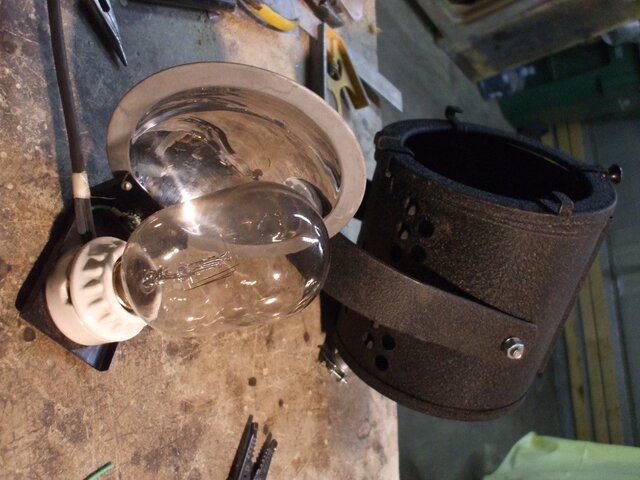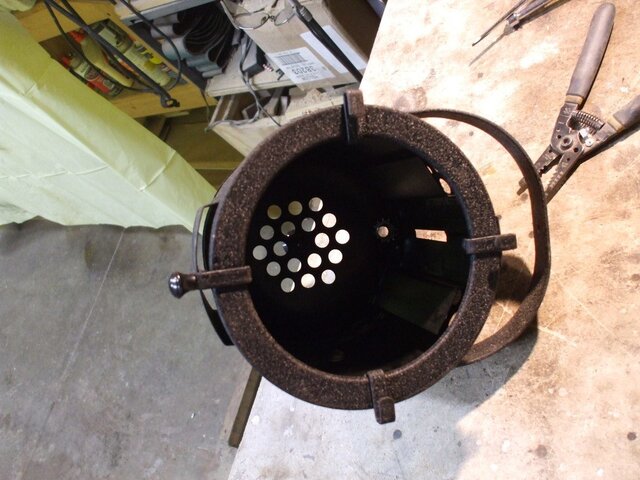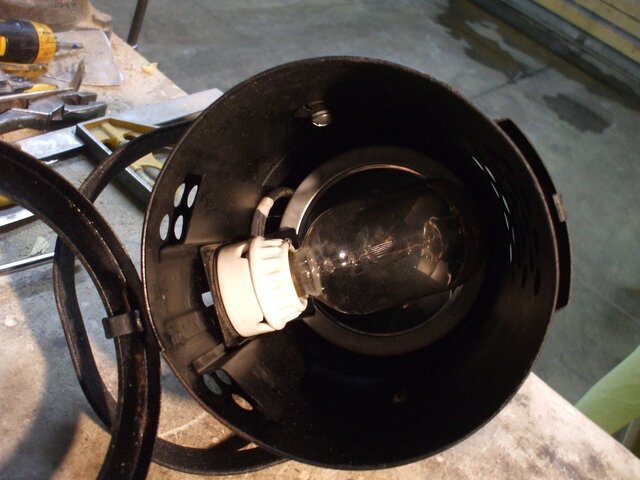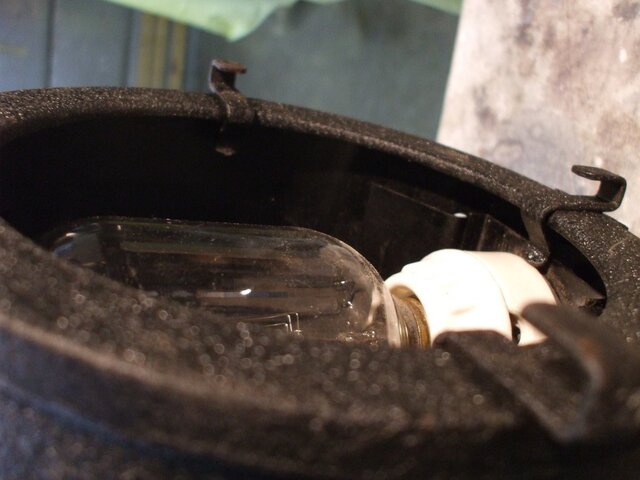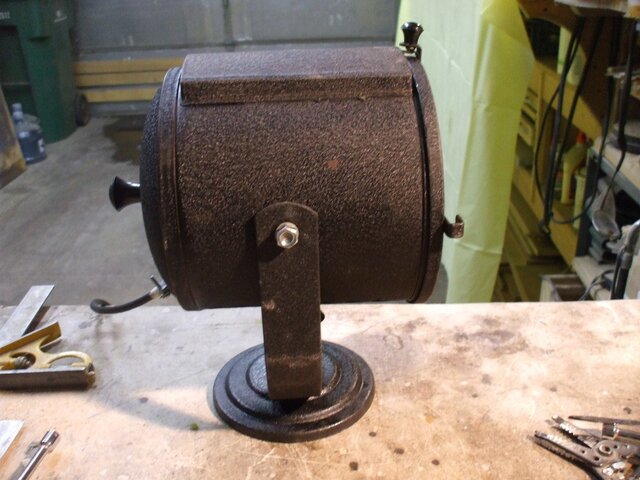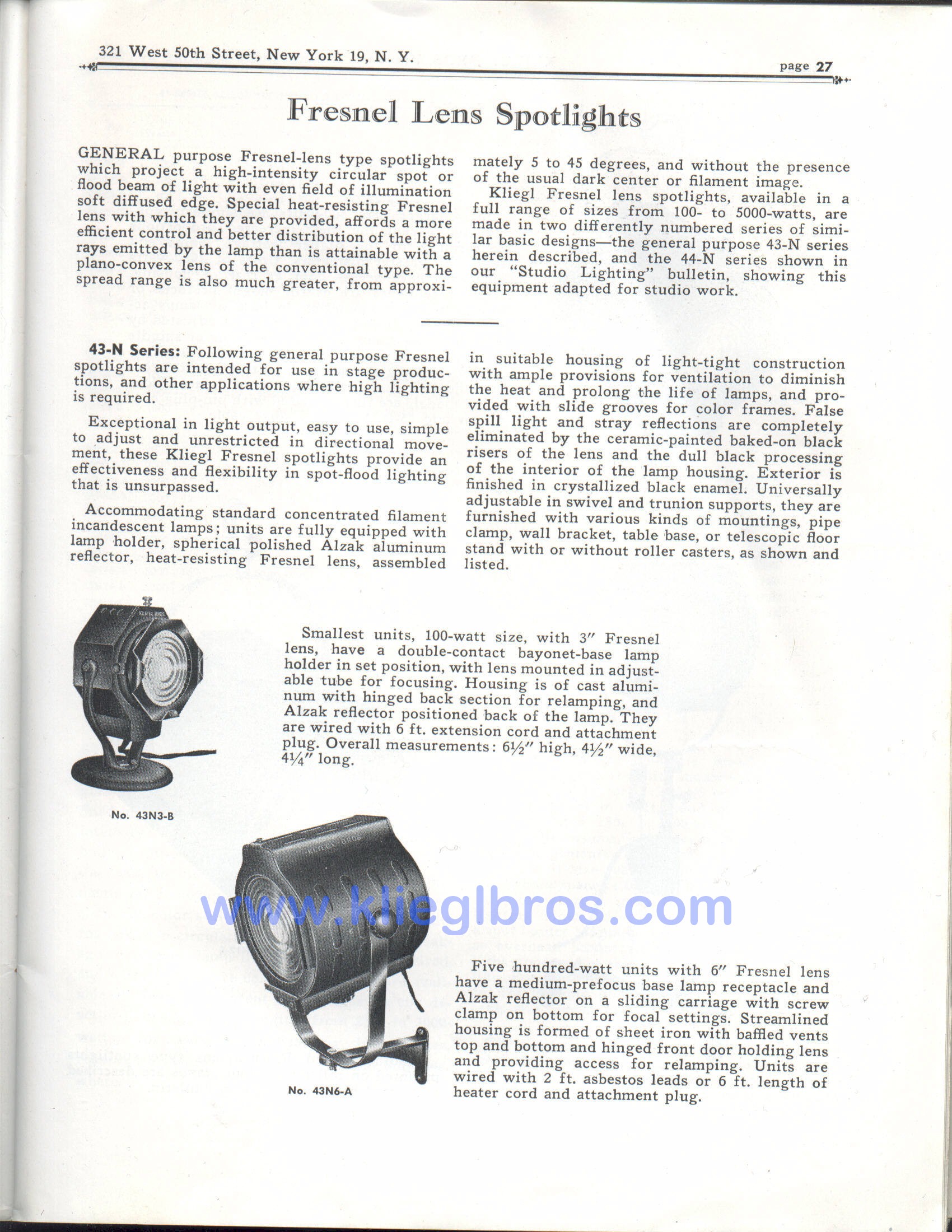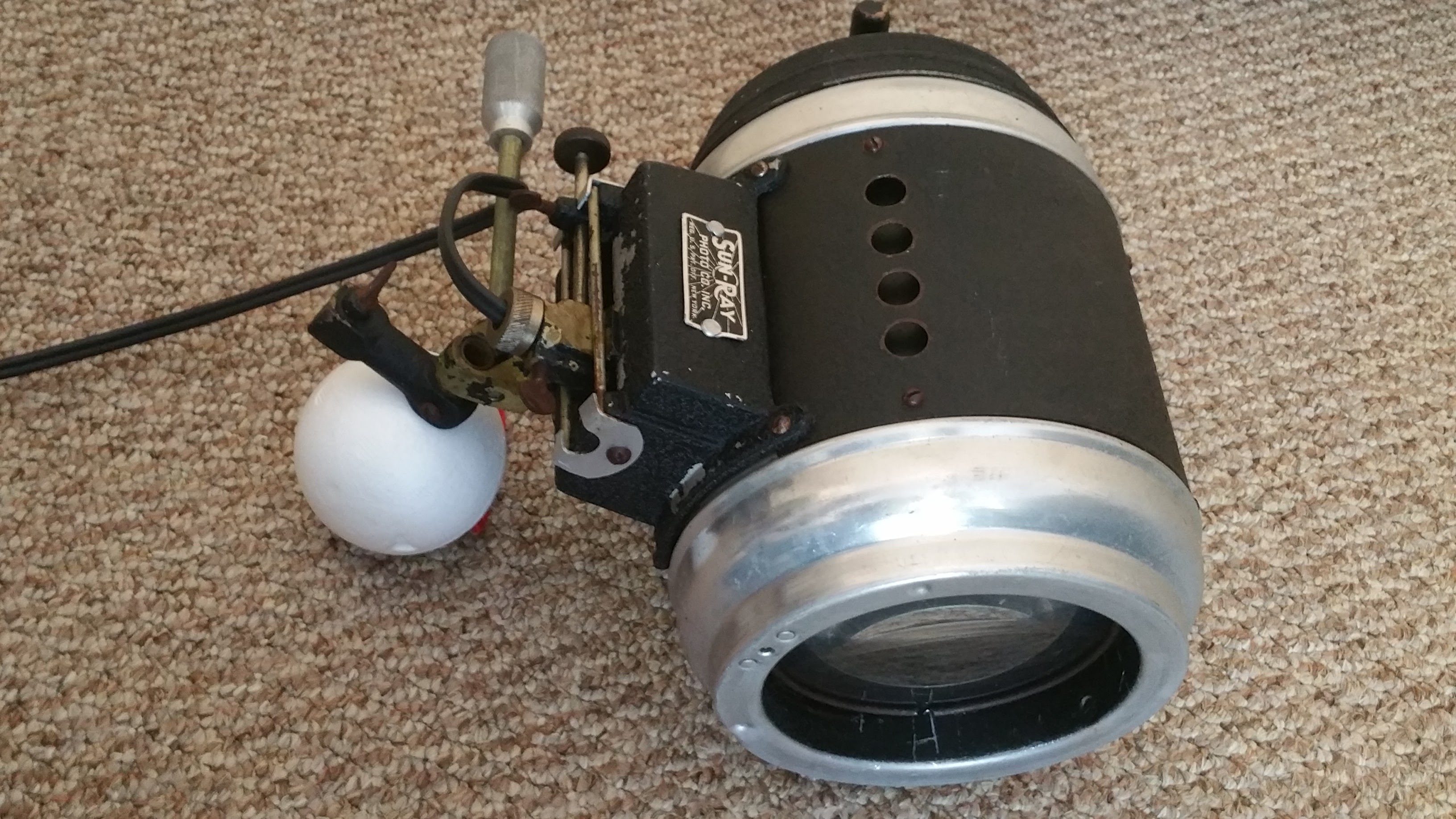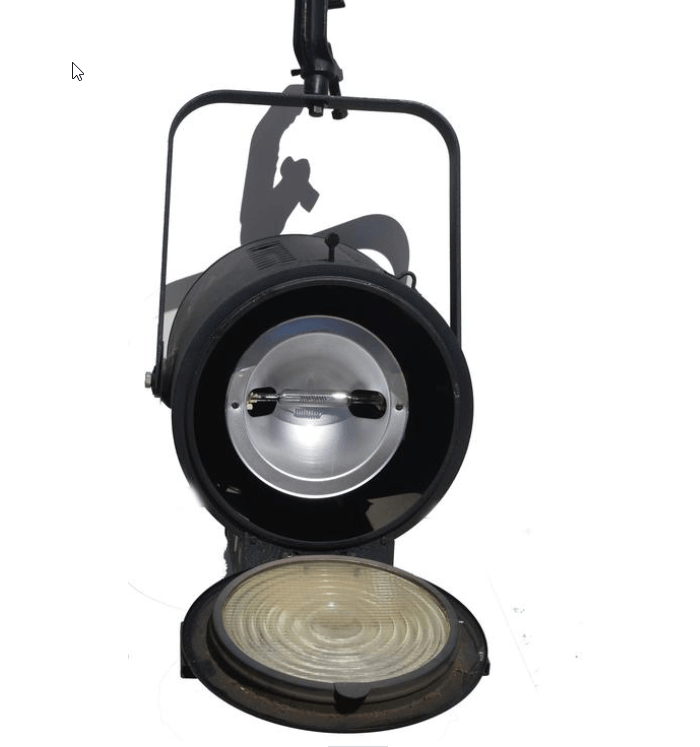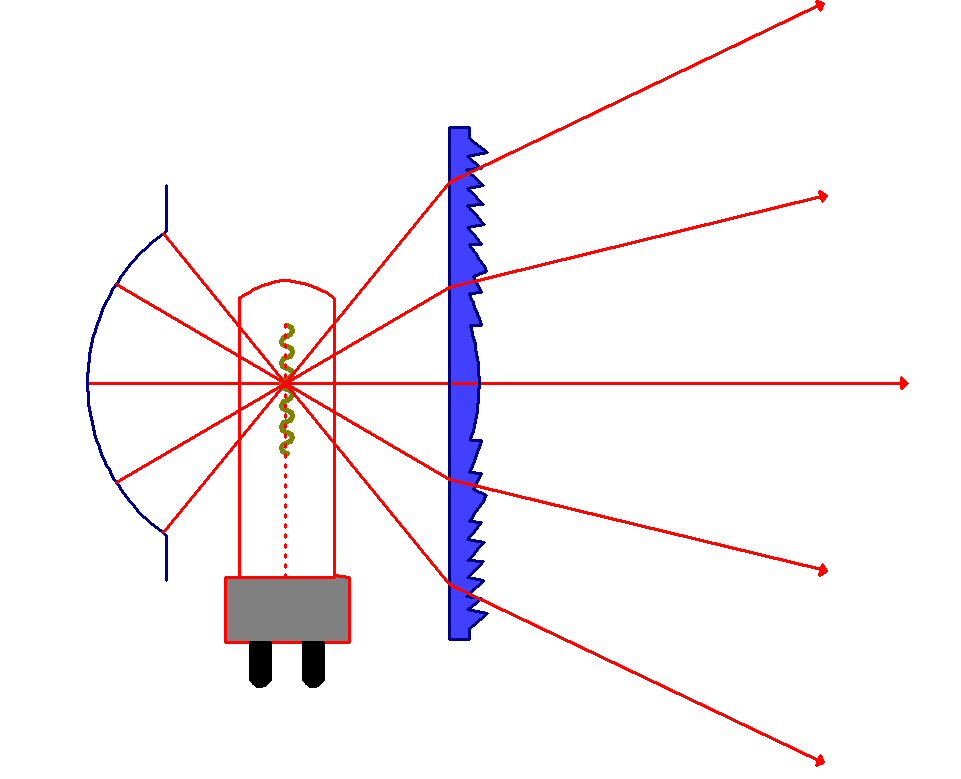Looked into the website, Derek and others - you are doing wonderful work in all ways for research and interviews. The post about Display Stage Lighting in searching for past posts about my last screw based Fresnel I worked on in topic of Leko invention, reminds me of my own research for Nook for a past PLSN article on the rock and roll PAR can. Wow and I should add in my own notes on history even if 60's technology and 30's era pattents. Excellent research done and links to those that did what in the industry. Hope links are presented below as this is interesting and formative history on stage lighting.
None the less, while working on Cyber 2.0 orniments, tonight I found time to work on another got for me. (Who the heck is bidding against me for anchient lights on E-Bay... I'm working on a museum here in stuff collected.)
Oldest Fresnel ever seen yet.
Have this Display Stage Lighting Fresnel that’s similar to one I already have but seemingly older. Bought it for like ten bucks plus shipping but it also came with original stand and a working 500w medium screw T-20 Radiant lamp. (Can’t imagine how much it’s worth on Don’s Bulbs.) Not the original lamp I think, but one that does seem to bench focus with it and is a very rare lamp.
Both in collection are similar in medium screw based fixtures with a more or less round signature to them and rounded yokes. A flare up at the top to vent the heat, but no box shape at the bottom for the larger sockets/lamps in use for more modern bi-pin or medium pre-focus lamps that were circa say1934 thru1936 for a start in leaning on the latter for date and initially interchangeable in which was more popular between the P-28s and G-38 socket - the bi-pin socket perhaps going towards higher wattage lamps as they were invented during the period..
TBA reminder to myself - get the serial number if any off the owner’s c.1936 #2046 8” Fresnel and send it into Mole - they have in the past been able to tell the manufacturing date. This has the Bi-pin Fresnel lamp, though it’s a 2Kw G-48 Mog. Bi-post version I wouldn’t expect was invented until the mid-1930's.
Both Display Stage Lighting fixtures are using Nylock hex screws for yoke, and for retaining the reflector as a nut. Ibid on a long past discussion on the invention of the hex nut. Still though possible in both cases from separate sources, when was a Nylock nut invented? Replaced hardware? EIn the case of this fixture for what was used, it was 5/16-28 screws with a standoff and cut away 5/16" bellevelle washer on the knob side, and just a washer and the same nylock nut on the other. Tight fit but too oversized to allow for a 1/4" fitting of the screw. Perhaps a focus knob in both instances that broke and were replaced with nylock bolts, on the other hand, perhaps nylon inserted lock hex nuts were around back in a 1928-1936 period.
Both similar in stuff to now. Both I believe (until I climb a ladder in inspecting) were using a single hole in the rear and two conductor asbestos coated two conductor non-grounded cord coming out the back. Similar texture paint also. Difference between the fixtures is that the one I’m currently working on is a little more textured in finish, and both were using similar mounting hardware. This one don’t have name plate mounting holes on it’s heat shield top. No name brand other than on it’s lens. The other one says it’s brand - though a chance in Giraffe Lighting buying Display Stage Lighting fixtures and putting their own name plate on them... My original fixture could be either brand - though I remember the brand of fixture stamped into the lens. This means that Display Stage Lighting say in the Mid-30's started stamping an unknown to exist name plate to their fixtures. One would suppose given another company Giraffe Lighting with an exact match for it, that would be a good idea. (Once found that brand on E-Bay and curse myself not buying it. Was missing all gizzards and lens but had that rivited name plate thus very important.) On the other hand, given the clips retaining really old Fresnel lenses, I believe I understand why at one side of the lens there is a cut away part to it. (Different post and different concept.)
This Fresnel doesn’t have holes for a name plate on it so is different and perhaps older than the initial one I have.
So given the lack of name plate as seen on my other one by way of rivet holes atop it as similar to the one I saw on the Giraffe Lighting version, but with Display Stage Lighting lens. This persay is one of that brand but older, the other could be either brand assuming Giraffe bought lenses from Display as possible, or Display later put name plates on it which was in later years removed. Current fixture has no such holes for name plate.
Next differences are that this medium screw lamp socket was cemented tight with I think factory injected porcelain cementing so as to hold it closed. That I believe so as to in bad attempt for engineering, make a way to focus the medium screw lamp. The medium screw filament lamp of the day - even if up to 400w at that point was very much vendor random by lot and not great for how it focused given the screwing in part of doing so. This is the first case of a non-science experiment like post mounting that didn’t feature the lamp socket directly screwed into the slide mechanism.
This fixture instead has a pound rivet swivel plate that the covered cleat style medium screw lampholder H&H of brand who ever they were, was allowed to swivel on. Normal parallel surface wiring lampholder only on a swivel plate and porcelain injected into it. I say injected because it got fed into places slapping it on wouldn’t get to including the lamp’s screw thread. First case of a screw base that I know of that has both porcelain injected into it, and works on a pivot pound rivet mount.
Anyway, “Encyclopedia of Stage Lighting” references Fresnels to the late 1920's and my 1929 Fuch’s “Stage Lighting” doesn’t list the existence of a Fresnel Fixture but it is a London publishing. Final e-mail question to the CEO of Times Square Lighting in him claiming that his company now is the oldest currently existing lighting company in the US was what about Display Stage Lighting. Believe they still exist (though to what form of it like Strand is of question), but he was not welcome to such a question in answering the history about another company. Display Stage Lighting, are they older than Times Square and or still the same company - even if no longer producing stage lighting gear?
More important, assuming Display Stage Lighting was not the first to invent the Fresnel light - possible but I don’t think so, who did so and what specific year did it come out? These are clearly different than PC fixtures of the times with a persay added Fresnel lens - they were designed to be Fresnel I believe and are clearly the forerunner to any modern Fresnel.
P.S. to this is also that the reflector isn’t the Alzark aluminum process that by 1929 was well in use of, but perhaps Display lagged a year or two in the use of. Instead it’s a steel reflector that has it’s reflector surface silvered and is even wearing away in some places. The rest of it is matt and rolled over edge steel. That with spot welding etc. Very early Fresnel to date. Also as opposed to multiple holes for the various asbestos cords to get out, this was a single hole with two conductors of asbestos within a rayon outer jacket cord that led to a ETC brand round cord type cord mount switch for on/off. Not the current ETC brand I think, but a brand in use at the time. Obviously the Kliegl 1926 and 1929 catalogues were of no help for info in checking them.
None the less, while working on Cyber 2.0 orniments, tonight I found time to work on another got for me. (Who the heck is bidding against me for anchient lights on E-Bay... I'm working on a museum here in stuff collected.)
Oldest Fresnel ever seen yet.
Have this Display Stage Lighting Fresnel that’s similar to one I already have but seemingly older. Bought it for like ten bucks plus shipping but it also came with original stand and a working 500w medium screw T-20 Radiant lamp. (Can’t imagine how much it’s worth on Don’s Bulbs.) Not the original lamp I think, but one that does seem to bench focus with it and is a very rare lamp.
Both in collection are similar in medium screw based fixtures with a more or less round signature to them and rounded yokes. A flare up at the top to vent the heat, but no box shape at the bottom for the larger sockets/lamps in use for more modern bi-pin or medium pre-focus lamps that were circa say1934 thru1936 for a start in leaning on the latter for date and initially interchangeable in which was more popular between the P-28s and G-38 socket - the bi-pin socket perhaps going towards higher wattage lamps as they were invented during the period..
TBA reminder to myself - get the serial number if any off the owner’s c.1936 #2046 8” Fresnel and send it into Mole - they have in the past been able to tell the manufacturing date. This has the Bi-pin Fresnel lamp, though it’s a 2Kw G-48 Mog. Bi-post version I wouldn’t expect was invented until the mid-1930's.
Both Display Stage Lighting fixtures are using Nylock hex screws for yoke, and for retaining the reflector as a nut. Ibid on a long past discussion on the invention of the hex nut. Still though possible in both cases from separate sources, when was a Nylock nut invented? Replaced hardware? EIn the case of this fixture for what was used, it was 5/16-28 screws with a standoff and cut away 5/16" bellevelle washer on the knob side, and just a washer and the same nylock nut on the other. Tight fit but too oversized to allow for a 1/4" fitting of the screw. Perhaps a focus knob in both instances that broke and were replaced with nylock bolts, on the other hand, perhaps nylon inserted lock hex nuts were around back in a 1928-1936 period.
Both similar in stuff to now. Both I believe (until I climb a ladder in inspecting) were using a single hole in the rear and two conductor asbestos coated two conductor non-grounded cord coming out the back. Similar texture paint also. Difference between the fixtures is that the one I’m currently working on is a little more textured in finish, and both were using similar mounting hardware. This one don’t have name plate mounting holes on it’s heat shield top. No name brand other than on it’s lens. The other one says it’s brand - though a chance in Giraffe Lighting buying Display Stage Lighting fixtures and putting their own name plate on them... My original fixture could be either brand - though I remember the brand of fixture stamped into the lens. This means that Display Stage Lighting say in the Mid-30's started stamping an unknown to exist name plate to their fixtures. One would suppose given another company Giraffe Lighting with an exact match for it, that would be a good idea. (Once found that brand on E-Bay and curse myself not buying it. Was missing all gizzards and lens but had that rivited name plate thus very important.) On the other hand, given the clips retaining really old Fresnel lenses, I believe I understand why at one side of the lens there is a cut away part to it. (Different post and different concept.)
This Fresnel doesn’t have holes for a name plate on it so is different and perhaps older than the initial one I have.
So given the lack of name plate as seen on my other one by way of rivet holes atop it as similar to the one I saw on the Giraffe Lighting version, but with Display Stage Lighting lens. This persay is one of that brand but older, the other could be either brand assuming Giraffe bought lenses from Display as possible, or Display later put name plates on it which was in later years removed. Current fixture has no such holes for name plate.
Next differences are that this medium screw lamp socket was cemented tight with I think factory injected porcelain cementing so as to hold it closed. That I believe so as to in bad attempt for engineering, make a way to focus the medium screw lamp. The medium screw filament lamp of the day - even if up to 400w at that point was very much vendor random by lot and not great for how it focused given the screwing in part of doing so. This is the first case of a non-science experiment like post mounting that didn’t feature the lamp socket directly screwed into the slide mechanism.
This fixture instead has a pound rivet swivel plate that the covered cleat style medium screw lampholder H&H of brand who ever they were, was allowed to swivel on. Normal parallel surface wiring lampholder only on a swivel plate and porcelain injected into it. I say injected because it got fed into places slapping it on wouldn’t get to including the lamp’s screw thread. First case of a screw base that I know of that has both porcelain injected into it, and works on a pivot pound rivet mount.
Anyway, “Encyclopedia of Stage Lighting” references Fresnels to the late 1920's and my 1929 Fuch’s “Stage Lighting” doesn’t list the existence of a Fresnel Fixture but it is a London publishing. Final e-mail question to the CEO of Times Square Lighting in him claiming that his company now is the oldest currently existing lighting company in the US was what about Display Stage Lighting. Believe they still exist (though to what form of it like Strand is of question), but he was not welcome to such a question in answering the history about another company. Display Stage Lighting, are they older than Times Square and or still the same company - even if no longer producing stage lighting gear?
More important, assuming Display Stage Lighting was not the first to invent the Fresnel light - possible but I don’t think so, who did so and what specific year did it come out? These are clearly different than PC fixtures of the times with a persay added Fresnel lens - they were designed to be Fresnel I believe and are clearly the forerunner to any modern Fresnel.
P.S. to this is also that the reflector isn’t the Alzark aluminum process that by 1929 was well in use of, but perhaps Display lagged a year or two in the use of. Instead it’s a steel reflector that has it’s reflector surface silvered and is even wearing away in some places. The rest of it is matt and rolled over edge steel. That with spot welding etc. Very early Fresnel to date. Also as opposed to multiple holes for the various asbestos cords to get out, this was a single hole with two conductors of asbestos within a rayon outer jacket cord that led to a ETC brand round cord type cord mount switch for on/off. Not the current ETC brand I think, but a brand in use at the time. Obviously the Kliegl 1926 and 1929 catalogues were of no help for info in checking them.
Attachments
Last edited:



